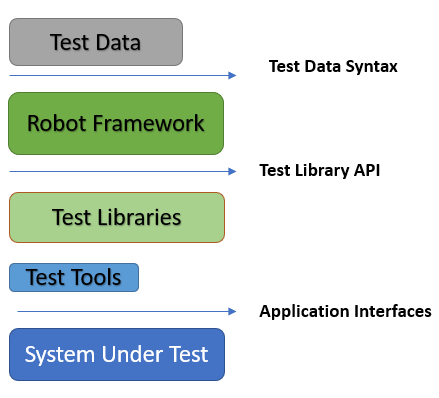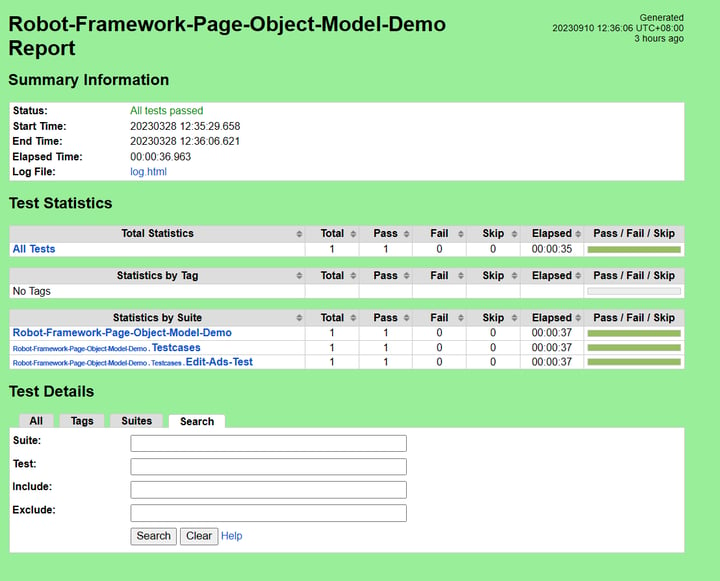The Robot Framework Handbook To Make Agile Testing Effortless

The Robot Framework is an indispensable tool for Agile testing. Its user-friendly nature, coupled with its adaptability, renders it suitable for testers at all levels of experience. In this handbook, we will delve into why Robot Framework is exceptionally well-suited for Agile projects. We will also explore what endears it to the testing community, acknowledge its constraints, and provide a step-by-step guide on utilizing Robot Framework for web automation using the Page Object Model (POM).

Why Opt for Robot Framework in Agile Projects?
1. Simple and Understandable Syntax
Robot Framework employs a keyword-driven, natural language syntax that simplifies test case creation and comprehension. This accessibility promotes collaboration, a cornerstone of Agile methodologies.
2. Reusable Components
The framework encourages the creation of reusable test libraries and keywords. In Agile, where iterations are frequent, these reusable components significantly reduce the time and effort required for test case creation.
3. Cross-Browser and Cross-Platform Compatibility
Robot Framework supports testing across various browsers and platforms, ensuring comprehensive testing of your Agile project across different environments and minimizing the risk of compatibility issues.
4. Seamless Integration
The framework effortlessly integrates with other tools commonly used in Agile projects, such as Selenium for web testing, Appium for mobile testing, and Jenkins for continuous integration. This streamlined integration automates the entire Agile development pipeline.
Why Testers Hold Robot Framework in High Esteem as Their Preferred Automation Technology
1. A Vast Library Ecosystem
Robot Framework boasts an extensive library ecosystem, offering a multitude of pre-built keywords and test libraries for diverse purposes. This wealth of resources expedites test case creation and execution.
2. Active Community Support
An active and supportive community surrounds Robot Framework. Testers can seek assistance, share experiences, and contribute to the framework's growth. This collaborative atmosphere fosters learning and effective problem-solving.
3. Comprehensive Reporting
Robot Framework generates comprehensive and customizable test reports. In Agile projects, where transparency and rapid feedback are paramount, these reports prove invaluable.
4. Unparalleled Flexibility
The framework's flexibility empowers testers to adapt swiftly to evolving Agile project requirements. Test cases can be modified easily to accommodate new user stories and acceptance criteria.
High-Level Architecture of the Robot Framework

Exploring Robot Framework's Constraints: What You Need to Know
1. Primarily Web-Centric
Robot Framework shines in web and mobile automation but may not be the best choice for desktop applications, limiting its applicability in certain scenarios.
2. Learning Curve
While user-friendly, mastering Robot Framework can be time-consuming, especially for those new to test automation. The natural language syntax can occasionally lead to ambiguities if not used judiciously.
How to Employ Robot Framework for Web Automation with the Page Object Model (POM)
Web automation with Robot Framework becomes significantly more efficient when combined with the Page Object Model (POM). Here's a step-by-step guide with code snippets to get you started:
File 1: login_page.robot
```robot
Settings
Library SeleniumLibrary
Variables
${LOGIN_PAGE_URL} https://example.com/login
${USERNAME_FIELD} id=username_field_id
${PASSWORD_FIELD} id=password_field_id
${LOGIN_BUTTON} id=login_button_id
Keywords
Open Login Page
Open Browser ${LOGIN_PAGE_URL} Chrome
Input Username ${username}
Input Text ${USERNAME_FIELD} ${username}
Input Password ${password}
Input Text ${PASSWORD_FIELD} ${password}
Submit Login Form
Click Element ${LOGIN_BUTTON}
Login To The Application ${username} ${password}
Open Login Page
Input Username ${username}
Input Password ${password}
Submit Login Form
```
File 2: login_test.robot
```robot
Settings
Resource login_page.robot
Variables
${VALID_USERNAME} YourUsername
${VALID_PASSWORD} YourPassword
${WELCOME_MESSAGE} Welcome, User
Test Cases
Valid User Login
[Documentation] Test for a valid user login
Login To The Application ${VALID_USERNAME} ${VALID_PASSWORD}
Page Should Contain ${WELCOME_MESSAGE}
```
Step-by-Step Explanation
- File Structure: Your Robot Framework project should have separate resource files for keywords (page objects) and test cases.
- Keywords File (login_page.robot):
- The `Settings` section defines that this file uses the SeleniumLibrary.
- In the Variables section, you define variables such as the login page URL and element locators (e.g., `${USERNAME_FIELD}` and `${PASSWORD_FIELD}`).
- The Keywords section contains reusable keywords for interacting with the login page. Open Login Page opens the login page, Input Username inputs the username, Input Password inputs the password, Submit Login Form clicks the login button, and Login To The Application which uses the previously defined keywords for a complete login process.
- Test Case File (login_test.robot):
- The `Settings` section includes the login_page.robot keywords file.
- In the `Variables` section, you define variables like `${VALID_USERNAME}`, `${VALID_PASSWORD}` and `${WELCOME_MESSAGE}` for your test cases.
- The `Test Cases` section contains your actual test cases. Valid User Login is an example test case that documents its purpose and uses the LoginPage page object for a valid login.
Overall, this code demonstrates a basic structure of a Robot Framework test suite that follows the Page Object Model (POM) pattern. It separates test cases from the underlying implementation details and promotes reusability through custom keywords. This makes it easier to maintain and scale your test automation efforts.
Sample Test Execution Report in Robot Framework

The Role of Test Automation in Agile Projects
In Agile projects, the integration of test automation, facilitated by Robot Framework, is instrumental in achieving success. Let's explore how test automation aligns with Agile principles:
1. Rapid Regression Testing
Agile projects involve frequent code changes due to iterative development. Automated tests, constructed using Robot Framework's straightforward syntax, offer a swift means of verifying that new code changes haven't introduced regressions or disrupted existing functionality. This ensures that the software remains stable throughout the development process.
2. Seamless Integration with CI/CD Pipelines
Robot Framework seamlessly integrates with Continuous Integration and Continuous Deployment (CI/CD) pipelines. Whenever new code is committed or pushed, automated tests are triggered automatically. This automated testing approach provides rapid feedback to development teams, enabling them to identify and rectify issues promptly. Consequently, Agile projects can maintain a fast-paced development rhythm.
3. Test Parallelization
Robot Framework supports the parallel execution of tests across multiple browsers and platforms. In Agile, where speed is paramount, this parallelization significantly reduces test execution time. This is especially vital in Agile's iterative development cycles, ensuring that testing keeps pace with development without becoming a bottleneck.
4. Facilitating Enhanced Collaboration
The Robot Framework's natural language syntax bridges the communication gap among Agile team members. Test cases are easily accessible and comprehensible to all stakeholders, including testers, developers, and product owners. Clear communication is a cornerstone of Agile project success, as it promotes shared understanding and collective responsibility.
Summary
In summary, the Robot Framework Handbook has elucidated the multifaceted advantages of Robot Framework in Agile testing. Despite its limitations, this versatile tool proves its mettle by simplifying test automation, promoting reusability, and facilitating cross-browser compatibility. Its integration capabilities with other Agile tools and frameworks make it a vital asset in today's Agile projects.
MagicPod is a no-code AI-driven test automation platform for testing mobile and web applications designed to speed up release cycles. Unlike traditional "record & playback" tools, MagicPod uses an AI self-healing mechanism. This means your test scripts are automatically updated when the application's UI changes, significantly reducing maintenance overhead and helping teams focus on development.

